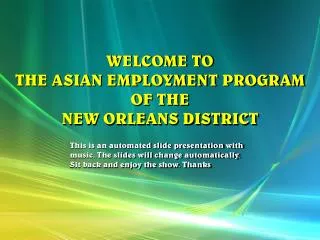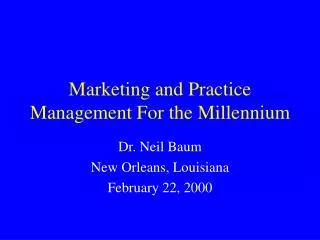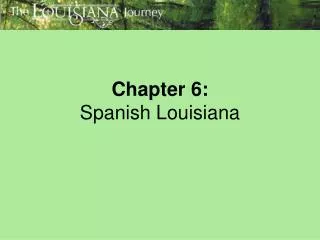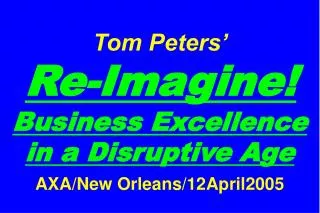NEW ORLEANS
klodjanaculaj1
Created on May 18, 2021

More creations to inspire you
Facts in the time of covid-19.
Presentation
AUSSTELLUNG STORYTELLING
Wolf academy, stage2- level1-mission 2: animation, tangram presentation, valentine's day presentation, human rights.
Discover more incredible creations here
Nicolo Bombana
New Orleans is the main city in the US state of Louisiana located on the Mississippi River near the Gulf of Mexico. It is known for its uninterrupted nightlife, vibrant music scene and spicy and unique cuisine that is the result of the union of French, African and American cultures. The spirit of the city is well represented by the Carnival (Mardi Gras), which takes place at the end of winter and is famous for the noisy costume parades and parties that take place on the streets.
introduction
From a meteorological point of view, the city is famous for its rain. The geographical area in which it rises, on the delta of the Mississippi River and therefore in the heart of the Gulf of Mexico, makes the climate humid and subject to constant rainfall throughout the year. This does not mean that it is impossible to visit one of the most exciting cities in the United States: just know which seasons are the most favorable and leave with the right preparation. As I mentioned, in New Orleans it rains very often, especially in summer. The humid subtropical climate makes it difficult to encounter really cold winters, while summers are usually very hot and muggy.
what's the weather like here?
On April 20/2010, what would become the worst environmental disaster in US history began. An explosion on BPs Deepwater Horizon oil rig caused a leak more than a kilometer and a half deep and an oil spill in the waters of the Gulf of Mexico. After several unsuccessful attempts, the leak was stopped only after 106 days, on 4 August, after some 4.9 million barrels of oil had gone into the sea. A year after the explosion, the situation has improved. Some beaches have already reopened to the public, others have never closed and tourism is slowly recovering; the fishermen are returning to work.
natural disasters
Due to its geographical position and geological conformation, especially in the last six years the state of Louisiana has been hit by three major environmental catastrophes that have in fact rewritten an important slice of its geography and landscape. On the morning of August 29, 2005, Hurricane Katrina entered southern Louisiana and then progressively pushed towards the Mississippi border. The storm surge that hit New Orleans opened 53 breaches in the levees around the city, flooding eighty percent of the territory. The city remained underwater for a few weeks, and about 1,500 people died. More than five years after the hurricane, the population of New Orleans has shrunk by 29%. Many New Orleans neighborhoods are still waiting to be rebuilt and many homes are still completely abandoned. The number of students enrolled in the city's schools is still halved compared to the pre Katrina numbers.
THE NATIONAL WWII MUSEUM
JACKSON SQUARE
AUDUBON ZOO
BOURBON STREET
AUDUBON AQUARIUM
What can we see in this city?
Bourbon Street is located in the heart of the old French Quarter in New Orleans Louisiana. It is spread over 13 blocks from Canal Street to Esplanade Avenue. While now primarily known for its bars and strip clubs, Bourbon Street's history offers a rich glimpse into New Orleans' past.
bourbon street
The Audubon Aquarium of the Americas is an aquarium in New Orleans, Louisiana, It is run by the Audubon Nature Institute , which also supervises the Audubon Zoo , Audubon Louisiana Nature Center, Freeport McMoRan Audubon Species Survival Center, Audubon Center for Research of Endangered Species (ACRES), Coastal Wildlife Network, Audubon Wilderness Park, and Audubon Park . It is located along the banks of the Mississippi River by the edge of the historic French Quarter off Canal Street, at the upper end of Woldenberg Park . It opened on September 1, 1990.
Located in historic Uptown New Orleans Audubon Zoo cares for animals from around the globe, engaging educational programs, and hands-on animal encounters. Unique natural habitats such as the award-winning Louisiana Swamp and Jaguar Jungle showcase the relationship between people and nature. Audubon Zoo is consistently one of the country’s top-ranked zoos, voted as one of the top ten zoos in the country in the USA Today “10Best” reader poll and ranked as one of the top things to do in New Orleans.
audubon zoo & aquarium
The National WWII Museum, formerly known as The National D-Day Museum, is a military history museum located in the Central Business District of New Orleans, on Andrew Higgins Drive between Camp Street and Magazine Street. The museum focuses on the contribution made by the United States to Allied victory in World War II. Founded in 2000, it was later designated by the U.S. Congress as America's official National WWII Museum in 2003. The museum is a Smithsonian Institution affiliated museum . ] The mission statement of the museum emphasizes the American experience in World War II.
City Park is a public park in New Orleans, Louisiana, is the 87th largest and 20th most visited urban public park in the United States. City Park is approximately 50% larger than Central Park in New York City. Although it is an urban park whose land is owned by the city of New Orleans, it is administered by the City Park Improvement Association, an arm of the state government. City Park is home to the world's largest collection of mature live oaks, some of which are over 600 years old. The park was founded in 1854, making it the 48th oldest park in the country and established as a City Park in 1891..
JAKSON SQUARE & CITY PARK
Jackson Square is a historic park located in the French Quarter of New Orleans, Louisiana. In 1960 it was declared a National Historic Landmark both for its central role in the history of the city and for being the site of the acquisition of Louisiana by the United States following the Louisiana Purchase of 1803. Two historical monuments: the Cabildo and the Cathedral of St. Louis.
Mardi Gras World is a tourist attraction located in New Orleans. Guests tour the 300,000 square foot working warehouse where floats are made for Mardi Gras parades in New Orleans. Mardi Gras World is located along the Mississippi River, next to the New Orleans Morial Convention Center. Their events venue, the River City Complex, also hosts festivals, weddings, private parties and corporate events.

“New Orleans”
Sep 16, 2011
100 likes | 510 Views
“New Orleans”. Birthplace of Jazz. Early History. New Orleans is a port city and 19 th -century commercial center slave trade, but also “more relaxed Caribbean culture 1718: founded by France 1763: sold to Spain 1803: reclaimed by the French
Share Presentation
- mixed race culture
- social strata
- public segregation
- many trade craftsman positions

Presentation Transcript
“New Orleans” Birthplace of Jazz
Early History • New Orleans is a port city and 19th-century commercial center • slave trade, but also “more relaxed Caribbean culture • 1718: founded by France • 1763: sold to Spain • 1803: reclaimed by the French • 1803: almost immediately sold to the United States • 1804: Haitian revolution. Many white masters and their slaves fled to New Orleans. • French, Spanish, and English speakers • largest, most sophisticated city in the South • cultural life from the 18th century, encompassing opera, Mardi Gras, dances, parades, and fancy balls.
History (cont’d.) • essentially French in character • Race relations somewhat “unique” compared elsewhere in US • slaves allowed to retain culture, including music. • Congo Square • From 1817 to about 1840 slaves and free blacks were permitted to dance and play music in a field behind the French Quarter called Congo Square
Voluntary colonists: • Capuchin monks, Jesuits, and Ursuline nuns - late 1720s. • Germans (just above the city). • "Casket girls.” • Acadians. • settlers from Spain, Africa, the West Indies, British America, Ireland, and Italy. • Slaves. • at least a few "free blacks" lived in New Orleans by 1722.
Creoles of color • New Orleans society recognized a mixed race culture in addition to blacks/whites • New Orleans mulattos known as Creoles of Color • French language skills, Catholic religious practice • privileges and opportunities, including civic power, property ownership, decent education, and skilled trades • "By the beginning of the nineteenth century, the Creoles occupied a position very near the top of the social order and though excluded from certain areas of white interaction, they had created their own social units, equal to and often vastly superior all others in the community.” A few owned cotton and sugar plantations with numerous slaves.
Creole Musicians • musical performance for many was a "hobby.“ • participated in opera and symphonic performances as well as the numerous brass bands. • Uneducated “Uptown Negroes” played raucous, beat-based, orally learned, bluesy, improvised music based on rags, folk music, and marches. Creoles saw this as unprofessional, but they started teaching Uptown blacks as well as young Creoles. • At first Creoles got the better-paying jobs playing traditional European dances, but blacks offered a new way of playing.
Storyville • Alderman Sidney Story, in attempting to confine the trade of prostitution to a limited area, established a 38-block area that became known as Storyville. • primarily devoted prostitution and “related businesses.” • In August 1917, the Secretary of War and the Secretary of the Navy issued orders forbidding open prostitution within five miles of Army or Navy posts.
War Between the States (April 12, 1861) • followed by Reconstruction and post-Reconstruction eras. • events and changing economic and political circumstances gradually changed the social strata of New Orleans. • Public segregation by race re-imposed 1877. • "Act 111 of the Regular Session of the Louisiana Legislature" - the first of the so-called "Jim Crow" laws - was enacted in 1890; separate cars were required for black and white patrons traveling first class (led to Plessy v. Ferguson) • separate waiting rooms in railroad depot. • outlawing of interracial marriages.
Economic hardship • Both black and white workers experienced economic hardship in the 1880s and 1890s. • A huge influx of immigrants competed for available work. • industrial machinery replaced large numbers of workers. • unions organizing many trade/craftsman positions. • Many Creole artisans found themselves completely out of work or operating on a much smaller scale.
The Great Migration • In the late nineteenth century, former slaves started to move into cities like New Orleans. With the onset of World War I, they moved north to places like Chicago and New York. They were socially motivated by their powerlessness, the discriminatory practices of sharecropping, widespread racial segregation, and thousands of lynchings for which nobody was arrested. • The draft during World War I opened up the labor market in northern cities for blacks.
- More by User

WELCOME TO THE ASIAN EMPLOYMENT PROGRAM OF THE NEW ORLEANS DISTRICT
WELCOME TO THE ASIAN EMPLOYMENT PROGRAM OF THE NEW ORLEANS DISTRICT This is an automated slide presentation with music. The slides will change automatically. Sit back and enjoy the show. Thanks WELCOME TO THE ASIAN EMPLOYMENT PROGRAM OF THE NEW ORLEANS DISTRICT
987 views • 15 slides

Marketing and Practice Management For the Millennium
Marketing and Practice Management For the Millennium. Dr. Neil Baum New Orleans, Louisiana February 22, 2000. The Three Myths of Healthcare. Goals & Objectives. Goals and Objectives. Review the needs and wants of the American physician Discuss why it is important to market your practice
1.33k views • 84 slides

Loss Portfolio Transfers: Accounting Considerations
Loss Portfolio Transfers: Accounting Considerations. Charles Woodman , CPA. 2001 Casualty Loss Reserve Seminar New Orleans / September 12. Discussion Flow. General Comments: LPT and Accounting Issues Relevant Accounting Fundamentals: Discussion Definitions Financial Accounting and Reporting
1.58k views • 17 slides

CURRICULUM ALIGNMENT AROUND LEARNING OUTCOMES AND ASSESSMENT
CURRICULUM ALIGNMENT AROUND LEARNING OUTCOMES AND ASSESSMENT. Alexei G. Matveev, Ph.D. NORFOLK STATE UNIVERSITY Southern University at New Orleans // Workshop on SACS Reaffirmation Preparations New Orleans, LA // October 16-17, 2008 . Introduction.
1.2k views • 78 slides

The Devil and Tom Walker
The Devil and Tom Walker. By: Washington Irving. Please select a Team. Blonde Hair Red Hair Brown Hair Black Hair. What is the story’s setting?. A Midwestern frontier pine forest, circa 1608 The New Orleans, Louisiana, riverfront, circa 1680
1.16k views • 30 slides

The Insurance Cycle is Alive and Well and Ready to Kill Your Company: Are Actuaries to Blame?
The Insurance Cycle is Alive and Well and Ready to Kill Your Company: Are Actuaries to Blame?. Casualty Actuarial Society Ratemaking Seminar New Orleans, LA March 10, 2005. Robert P. Hartwig, Ph.D., CPCU, Senior Vice President & Chief Economist
1.29k views • 106 slides

Counting Semaphore Implementation in Java
Counting Semaphore Implementation in Java. CS598 – Concurrent Programming. Kasturi Kallakuri Cindy Mayo 21 August 2002. “Alfonse, Wait Here for My Signal!”. Author: Stephen J. Hartley Original presentation: ACM-SIGCSE March 1999 New Orleans, Louisiana. 1 Java is Multithreaded.
995 views • 64 slides


Chromeleon 7.2
Chromeleon 7.2 . ACS New Orleans Thermo Fisher Scientific Larry G. West. Meet New Charlie Chromeleon. Chromeleon Goes MS!. Enterprise architecture Unparalleled ease-of-use Multi-vendor instrument control Comprehensive compliance tools. >30 years of MS experience
3.59k views • 63 slides

Working Together to Improve Birth Outcomes in North Carolina
Working Together to Improve Birth Outcomes in North Carolina. Region IV and Region VI Infant Mortality Summit January 12-13, 2012 New Orleans Belinda Pettiford , MPH NC Division of Public Health, Women’s Health Branch Sarah Verbiest, DrPH , MSW, MPH
900 views • 79 slides

Time-dependent density-functional theory
Carsten A. Ullrich University of Missouri-Columbia. Time-dependent density-functional theory. Neepa T. Maitra Hunter College, CUNY. APS March Meeting 2008, New Orleans. Outline. 1. A survey of time-dependent phenomena 2. Fundamental theorems in TDDFT 3. Time-dependent Kohn-Sham equation
1.4k views • 98 slides

A Tale of Two Cities Chapter 7 Monseigneur in Town
A Tale of Two Cities Chapter 7 Monseigneur in Town. Main Characters. Monsignor – A rich noble who was one of the great lords of the court. Farmer General- Handles Monsignor's finances. Monsieur Orleans- Professor of the provinces.
1.04k views • 84 slides

997 views • 84 slides

Exercise Physiology
Exercise Physiology. J.M. Cairo, Ph.D. LSU Health Sciences Center New Orleans, Louisiana [email protected]. Somatic Factors Sex and Age Body Dimension Health. Training Adaptation. Psychic Factors Attitude Motivation. Bioenergetics Storage Fuels Fuel Intake Oxygen Uptake
1.42k views • 101 slides

Louisiana Legislative Women’s Caucus Workshop on Insurance & Economic Development New Orleans, LA
Louisiana Insurance Market Overview: Toward Viable Insurance Markets in the Post-Katrina & Rita Era. Louisiana Legislative Women’s Caucus Workshop on Insurance & Economic Development New Orleans, LA January 27, 2007. Robert P. Hartwig, Ph.D., CPCU, President & Chief Economist
1.04k views • 90 slides

Chapter 6: Spanish Louisiana
Chapter 6: Spanish Louisiana. Themes:. Louisiana and the World Timeline (pp. 124-125) Spanish Government Begins; New Laws (pp. 126-130) Unzaga; G á lvez; Mir ó (pp. 131-135) The Acadians (pp. 136-137) The New Orleans Fires (pp. 138-139) Carondelet; Economics (pp. 140-141). Themes:.
1.59k views • 64 slides

ILCOR resuscitation science review process: update
ILCOR resuscitation science review process: update. New Orleans Nov 5th 2008 Peter Morley. Conflict of interest disclosure. Commercial/industry Evidence Evaluation Expert (ILCOR/AHA) Potential intellectual conflicts Deputy Chair Australian Resuscitation Council (ARC)
1.22k views • 106 slides

Ethnic and Racial Assimilation
Ethnic and Racial Assimilation. I. A Historical Perspective 1. Most immigrants landed at the five American ports: New York, Boston, Philadelphia, Baltimore and New Orleans. 2. Three immigration waves: 1820-1860; 5 million 1861-1880; 5 million 1881-1920; 23 million.
1.62k views • 140 slides

Chapter 10 Review
Chapter 10 Review. New Leaders. New West. 1801: Jefferson becomes President 1803: Louisiana Purchase 1807: Embargo Act 1811: Tecumseh; Battle of Tippecanoe. TIMELINE. 1812: War of 1812 begins 1814: British burn Washington D.C.; Treaty of Ghent; Battle of New Orleans. Thomas Jefferson.
1.03k views • 88 slides

Tom Peters’ Re-Imagine! Business Excellence in a Disruptive Age AXA/New Orleans/12April2005
Tom Peters’ Re-Imagine! Business Excellence in a Disruptive Age AXA/New Orleans/12April2005. “If you don’t like change, you’re going to like irrelevance even less.” —General Eric Shinseki, Chief of Staff. U. S. Army. Slides at … tompeters.com. Re-imagine! Not Your Father’s World I. 26 m.
1.49k views • 135 slides

1.26k views • 98 slides

Music Willie Nelson – City of New Orleans
Music Willie Nelson – City of New Orleans.
978 views • 87 slides
